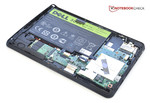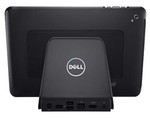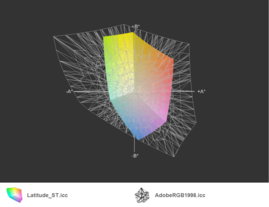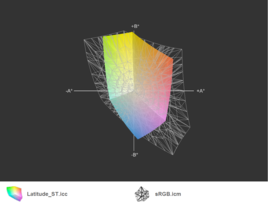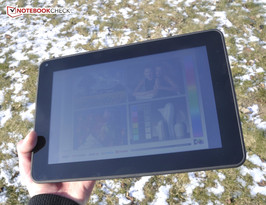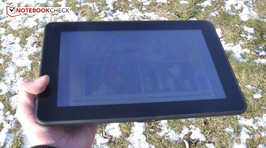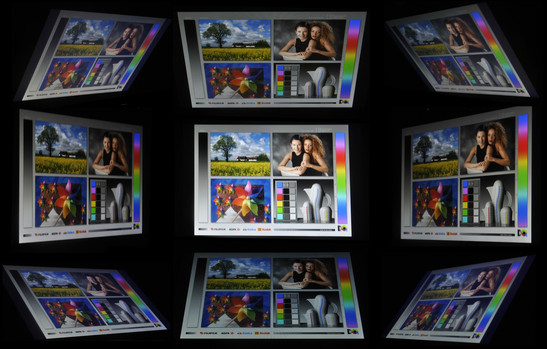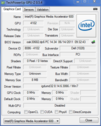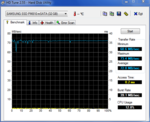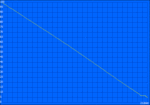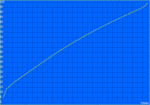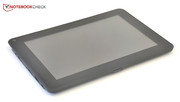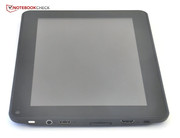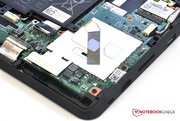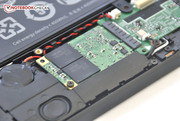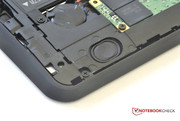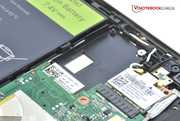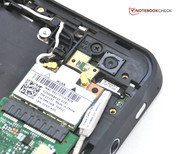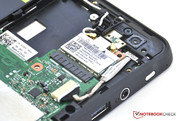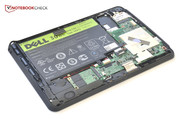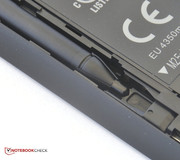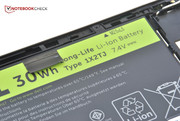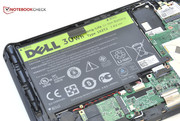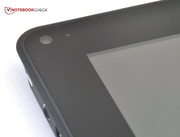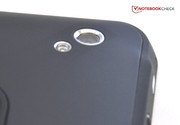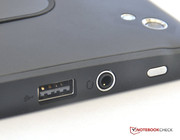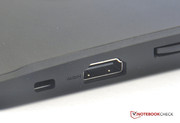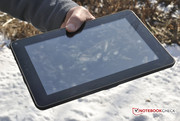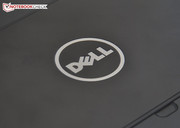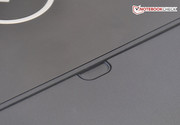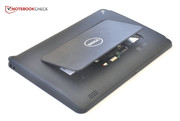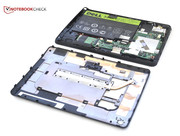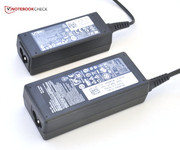Review Dell Latitude ST-LST01 Tablet/MID

Tablets are en vogue at the moment. Reports about rising sales figures are heard continually, and they are already very popular among consumers. However, companies still have a hard time with the newest device category. They are usually equipped with an operating system "unknown" to the existing structure, such as Android or iOS. It can neither be incorporated into the company's network nor is it compatible with company software. An operating system from Microsoft is usually required for that.
Dell tries to attend to just this problem in companies by releasing a tablet with a full-size Windows 7 version onto the market. The Latitude ST works with an Intel Atom processor and is thus a full-fledged computer, theoretically. Apart from that, the tablet also has to meet other high requirements placed by the companies. Thus, the tablet is quite easy to maintain, offers a docking station and inexpensive warranty extensions. Has Dell developed the perfect product for the business range with that?
Case
The Latitude ST is kept in dark gray shades. The only color seen on the case is a small red dot on a bar when it is turned off. It shows that the content is locked when the device is rotated. The rear is made of dark gray, matt plastic. Dell's silver logo is embedded in the center. The sides are comprised of dark rubber which is supposed to protect the tablet against shocks. The front is made of particularly resistant Gorilla Glass, which allegedly has a higher damage resistance in cases of falls or shocks.
The dimension of the 10.1 inch tablet is 270x187 mm; its maximum thickness is 16 mm. However, this height is only reached in the upper right where the slot for the stylus is located. Therewith, the Latitude is relatively thick. An iPad 2, for example, has a height of approximately 9 mm. Then again, the iPad 2 can't serve with such a diversity of ports. The Latitude ST is also heavier than the competition with a weight of 810 grams. The similarly built HP Slate 2 (also Win-based) weighs well 100 grams less and the iPad 2 is also a lot lighter with 600 grams.
However, the very good workmanship makes up for that. The tablet creaks quietly when it's twisted, but no irregular gaps or instable areas can be found on the case. The rubber edge as well as the thickness and weight give the Latitude ST a very robust impression. The power adapter is remarkably small and handy, and only weighs 150 grams.
The Latitude ST earns an extra point with its removable rear. It is divided into two parts: One cover can be easily opened with a button for inserting a SIM card (only more expensive models) and for viewing the Windows 7 license sticker. After removing four Philips screws, the rest of the rear can be levered off with a bit of force. Now it's easy to access the exchangeable battery, the mSATA-SSD and network modules. The RAM unfortunately can't be exchanged.
Connectivity
Except for the docking port on the bottom (portrait mode), all interfaces are located on the left. From top-down, the user will find the combined headphone and microphone jack, USB 2.0, SD card reader and HDMI. A Kensington lock is also available as a security feature. Most applications are covered with this scope of interfaces. Users who want to connect more devices can use the docking station.
Communication
The Latitude ST only supports wireless networks in the case. Bluetooth 4.0 LE (low energy) and WLAN a/b/g/n is installed in the standard version. It almost seems like the integrated wifi module is also designed for low power consumption because it proved to have a very short range in the test. This is very annoying especially for a portable device like a tablet.
While a simultaneously used Dell Vostro V131 continued to have a stable Internet connection even on one floor below us, we had problems keeping the Internet connection upright in the test with the Latitude ST. We could observe the best reception when the tablet was held in an absolutely upright position with the docking port showing upward.
We used the tool inSSIDer to assess the signal quality in terms of numbers. It records the reception strength in decibels. The closer the value is to zero, the better the signal is. The Vostro V131, placed directly beside the router, achieved a noise level of about -30 dB. In return, the Latitude reached about -50 dB in most positions, and when the docking port was turned to the top -40dB.
The reception strength drops to -60 db when we go down to the next floor and place ourselves directly underneath the router. The ceiling is a concrete and steel construction. We also measure poor -60 dB when on the same floor as the router two rooms away, only separated by two walls.
A UMTS module can be bought for a steep surcharge of EUR 140. It enables the user to surf on the Internet via the mobile network - providing that the user has the corresponding data contract. It is then also possible to receive GPS signals with the UMTS module.
Security
The Latitude ST has a built-in TPM module. The device can also be secured against theft with a corresponding lock via the Kensington slot.
Accessories
Dell offers a matching docking station for just under EUR 150 for the tablet. The Latitude ST is inserted in landscape mode. It adds three USB 2.0 ports to the tablet. Moreover, it also has HDMI and an audio port for stationary use. The docking station additionally harbors Gigabit LAN port.
Warranty
The Latitude ST's warranty amounts to a two year onsite service for the next business day without an extra charge. It can be extended to three years for a fairly low price of EUR 17. Apart from that, Dell promises telephone and email support around the clock, and a maximum waiting time of only two minutes until a support staff member answers the telephone personally.
Input Devices
Inputs are made on the Latitude ST either with the stylus or the finger. Since the touchscreen is capacitive, inputs with (normal) gloves or other pens aren't possible. The stylus needs a somewhat unusual AAAA battery as power source. Inputs via fingers can also be disabled so that an incidental touch with the hand during stylus input is ignored. A right click is accomplished by pressing a point for a longer time. Besides that, there is also a button on the stylus for this purpose. A second button is mapped with "delete", but it can be disabled. Multi-touch functions are also possible with the finger, but they only work in a few Windows programs. For example, Firefox can't be scaled but the Windows Photo Viewer supports forward, back, zoom in/out and rotate.
Text can be entered either via a desktop keyboard or handwriting recognition. The virtual keyboard's size can be adjusted and is thus easy to use with both the finger as well as the pen. In return, handwriting recognition only delivers usable results with the pen. The tablet learns to decipher the writing better with every entry and reduces the error rate. However, entries with the finger are ultimately too coarse and writing errors occur too frequently.
There are a few special keys distributed around the tablet: A bar for turning on the tablet is located on the upper left. An LED is built into it and shows the operating status of the Latitude ST. A volume control rocker is located beside that. The content on the screen rotates when the tablet is turned. A similar bar stops the desktop from rotating and the red dot that was mentioned earlier lights up. There is a button on the right that emulates the key combination "CRTL+ALT+DEL".
Overall, the use of Windows 7 via the touchscreen is of course only sub-optimal. The integrated stylus defuses the situation considerably, though. Since the tablet can be used with a conventional mouse and keyboard, the restrictions stay within limits.
Display
The installed screen comes from LG and is called LGD0345. It has a size of 10.1 inches and a resolution of 1280x800 pixels. Dell places itself in the upper field with it: The 8.9 inch HP Slate 2 only has 1024x600 pixels and the iPad 2 with a 0.4 inch smaller screen also only has 1024x768 pixels.
The measurements let us expect a very good screen; and the screen installed in the tablet is also suitable for practical use. The average brightness of 346.7 cd/m2 is high enough for almost all surroundings. The brightest spot is found in the top center with 367 cd/m2. It gets darker toward the bottom and the sides. Nevertheless, the illumination of 91% is also very good.
A black value of 0.56 cd/m2 is also impressive. This leads to a high contrast of 650:1. The high brightness and strong contrast ratio let the colors on the tablet look vivid and true. The screen's only drawback is its reflective surface.
| |||||||||||||||||||||||||
Brightness Distribution: 91 %
Center on Battery: 364 cd/m²
Contrast: 650:1 (Black: 0.56 cd/m²)
42.96% AdobeRGB 1998 (Argyll 3D)
59.4% sRGB (Argyll 3D)
41.43% Display P3 (Argyll 3D)
Not even the screen's good brightness can compete against the intense reflections in outdoor use in direct sunlight, though. When the viewing angles are cleverly chosen, it's nevertheless possible to work with it acceptably outdoors.
An external monitor can also be connected via HDMI. The tablet is not only able to clone the screen or solely use the external monitor. It can also expand the desktop to a 1080p screen so that it's possible to work with two screens.
However, this interesting option should only be enjoyed with reservations. Merely opening a folder in Windows explorer was a trial in a test on a Full HD monitor, despite the fast SSD. Fast surfing on the Internet was also just as impossible with the full resolution. This can be improved by reducing the output resolution.
Thus, users who want to connect the tablet to a mouse, keyboard and monitor via the docking station, should opt for a monitor with a lower screen resolution and disable the Latitude ST's screen.
Performance
The Latitude is based on Intel's Oak Trail platform. It was designed for tablets and doesn't need to be cooled actively by a fan. The Atom processor Z670, the graphics solution Intel GMA 600 and a memory controller for a maximum of 2 GB of DDR2-800 have been bundled on one chip. The processor clocks with 1.5 GHz, but doesn't support 64 bit operating systems. The Intel GMA 600 runs with 400 MHz and supports DirectX up to version 10.1.
Processor
The Intel processor, Atom Z670, is at the very bottom in the benchmarks. It is outdone by both the old N450 as well as the even older N270. Besides that, it is also located far below the AMD C-50, which however has a higher power consumption rate. Compared to other Intel Atom based tablets, its 759 points are very close to the HP Slate 2 and is clearly higher than the Fujitsu Stylistic Q550's score in Cinebench 10.
System Performance
The entire system is assessed practically in PCMark Vantage. The Latitude has a 10% advantage over both contenders with an Atom Z670. The reason for this is the good SSD from Samsung. However, even that can't make the tablet faster than a netbook with an AMD C-50 and a conventional, rotating hard disk.
| PCMark Vantage Result | 1311 points | |
| PCMark 7 Score | 830 points | |
Help | ||
Mass Memory
The mass memory comes from Samsung and is installed as an SSD with mSATA interface. It's possible to opt between three sizes: 32 GB, 64 GB and 128 GB are available. The SSD belongs to the PM810 series, also known as Samsung 470. It is however a lot slower than its bigger counterparts. Thus, it manages 85 MB/s in sequential read and write according to AS SSD. Current 5400 rpm HDDs, which are considerably larger and far from being as energy efficient, also have these transfer rates. The speed for copying an image file is 62 MB/s, whereby 13% of the processor's capacity is needed according to HDTune.
Graphics Solution
The graphics solution is built on the chip along with the processor and consequently doesn't consume as much power as a dedicated solution. Unfortunately, the performance is also very restricted because the Intel GMA 600 is much too weak for applications that have slightly higher requirements. The graphics card supports DirectX 10.1 and accelerates the playback of current codecs, such as H.264. However, YouTube videos can't always be rendered smoothly and current computer games shouldn't even be considered anyway. This is also reflected in the strikingly low score in the benchmarks. The Latitude ST only achieves 249 points in the outdated 3DMark 03.
| 3DMark 03 Standard | 249 points | |
| 3DMark 06 Standard Score | 119 points | |
Help | ||
Application Performance
Unfortunately, the subjective application performance is disappointing. Thanks to the SSD, the tablet boots faster than conventional notebooks but slower than the Android based contenders. Although the Atom processor is mostly sufficient for surfing without flash animations or videos, the Latitude can't cope with any more complex applications. Thus, the tablet already stutters when rendering YouTube videos in 720p and higher. Even smaller videos can't always be rendered smoothly. The tablet's predestined fields of application are basic office applications and light web browsing.
Emissions
System Noise
Due to the processor's low maximum power consumption, respectively cooling load (TDP) of 3 watts, the tablet doesn't have an active fan. The heat is solely emitted over a large-scale heat sink on the rear. The mass memory is also noiseless because a solid state drive is used rather than a rotating hard disk. Thus, the Latitude ST doesn't make a noise even during use.
Temperature
Despite the weak processor, the tablet can get quite warm with a maximum power consumption of 3 watts. A fan hasn't been installed and the heat is conveyed to the case's rear via copper heat pipes. It reaches a temperature of over 40°C in some areas during load. The tablet also gets noticeably warm on the front, but it doesn't reach any unpleasant temperatures.
The Latitude ST also doesn't stay quite cool during normal use, but it reaches a tolerable 35°C on the front and a maximum of 36°C on the rear. The heat source can clearly be detected in the lower left corner. This is where the processor is located.
(+) The maximum temperature on the upper side is 38.7 °C / 102 F, compared to the average of 33.7 °C / 93 F, ranging from 20.7 to 53.2 °C for the class Tablet.
(±) The bottom heats up to a maximum of 41 °C / 106 F, compared to the average of 33.2 °C / 92 F
(+) In idle usage, the average temperature for the upper side is 31.7 °C / 89 F, compared to the device average of 30 °C / 86 F.
Speakers
Three slots that hide a mono speaker are found on the case's rear. As usual, it doesn't have bass and sounds tinny. However, it is absolutely sufficient for surfing on the Internet or for the occasional small video. Apart from that, the maximum volume is very high so that it's still possible to hear everything even in a louder surrounding. But the tablet will likely be used with headphones in most cases anyway.
Battery Life
Power Consumption
The first thing that is noticed is that the standby power consumption is just as high as when the tablet is turned off. Thus, the question comes up if it's worth shutting down the tablet or if it should always simply be left in standby. The other data meet the expectations: The power consumption of 5-8 watts is kept within limits. It increases only slightly during load and reaches just under 12 watts.
This is a good rate for Windows devices. However, tablets optimized for Android or iOS are satisfied with even lower consumption rates - and with partly higher performance reserves.
| Off / Standby | |
| Idle | |
| Load |
|
Key:
min: | |
Battery Runtime
The tablet's battery takes up a large part of the room in the case. It has a capacity of 30 Wh and can even be replaced with a bit of effort. We determine the maximum possible runtime with the minimum screen brightness and disabled WLAN. Reading a text document is simulated for this. The Latitude ST achieves almost seven hours here. That is an acceptable rate, but other tablets last a lot longer. For example, the Fujitsu Stylistic Q550 manages over ten hours when idling.
We surf on the Internet via wifi with medium brightness in our WLAN test. The tablet lasts for five and a half hours here. Thus, the tablet ranges in the same field as the HP Slate 2 in use.
All energy saving options are disabled, WLAN is on and the screen is set to maximum brightness during load. Here, the tablet achieves good three and a half hours with continuous load of processor and graphics solution.
The tablet needs approximately four hours for recharging the battery when it's turned off - an acceptable rate. In return, the time that the tablet needs for recharging when it's turned on is devastating. It needs over twelve hours for recharging even when it's idling.
Verdict
The Latitude ST offers a corporate-suitable operating system on a tablet with Windows 7. It is based on Intel's Oak Trail platform with the Atom Z670 processor. The case is also made for rough conditions. The sides are comprised of rubber and the screen is protected by an especially tough panel. The tablet makes an overall robust impression and the workmanship is good. However, this leads to a fairly high weight of 800 grams and a thickness of 16 mm.
The tablet has been given plenty of interfaces for a tablet. The HDMI port has to be seen as a special highlight as it allows showing undemanding presentations over a beamer. Bluetooth, WLAN a/b/g/n and even UMTS in the more expensive version are available as network technologies. Users who need Gigabit LAN can buy the docking station.
The tablet can be used with either the included stylus or with the finger. The latter option even supports multi-touch. The input is accurate and can easily be customized to meet personal needs. The Latitude ST's screen scores particularly well: It has a high brightness, good contrast as well as good viewing angles. But, the surface is reflective so that the content becomes almost illegible in direct sunlight.
The Latitude ST doesn't emit any sound at all due to the invariably noiseless components. In return, it is all the more warmer because temperatures between 35 and 40°C are quickly reached. The power consumption is, as expected, very low and usually remains below 10 watts. The tablet easily lasts for five hours with the 30 Wh battery. The fact that recharging the battery takes over twelve hours when the tablet is on sounds a bit peculiar. It needs four hours for that when it's turned off.
In contrast, the performance is more than modest. The Intel Atom processor is designed for devices without a fan and thus the performance is also very low. The graphics solution is integrated on the same chip and hardly offers any performance reserves. The SSD from Samsung can't compensate that. It can also theoretically be replaced via the removable back cover.
Overall, the Latitude ST can only be recommended to companies that need a tablet which works on Windows 7. It offers a balanced price-performance ratio and good equipment. However, the application performance is limited to the most basic programs. Consumers should therefore sooner look around for tablets with another operating system, for example Android or iOS.




